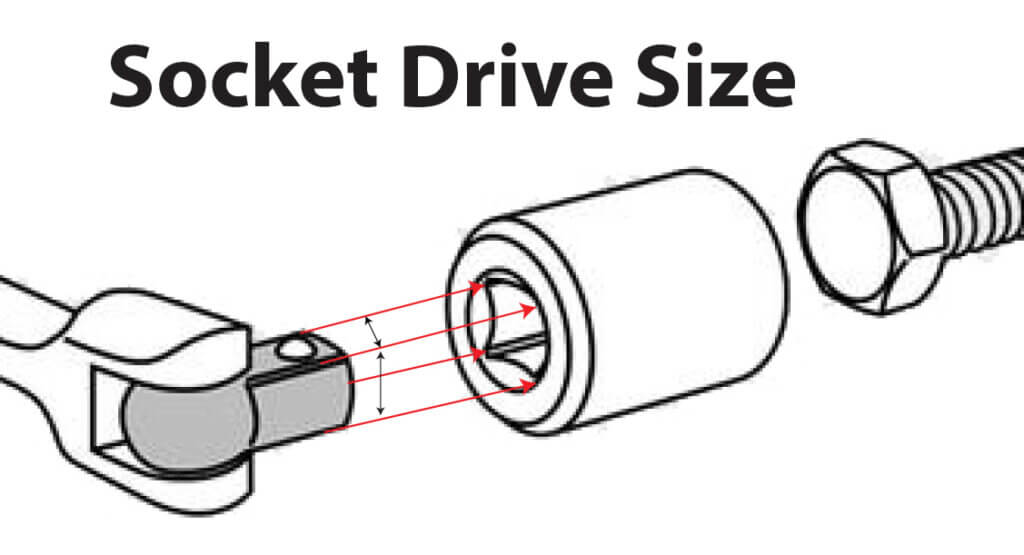How to buy a socket set
How to buy a socket set — what features to look for
When shopping for a socket set you’ll see many brands and features and it can be very confusing, so I’ll walk you through the terms and help you with picking the best features. Here’s how to buy a socket set and the features and brands to consider when you buy a socket set.
What is socket drive size?
Socket sets are sold by drive size. That refers to the size of the square drive “tang” that the socket snaps onto. Most socket sets for home use are ¼-in., 3/8-in, and ½-in. drive.
• 1/4″ — Use ¼-in drive sockets for small fasteners or when working in tight places.
• 3/8″ — Use 3/8″ drive sockets for most automotive and outdoor power equipment.
• 1/2″ — Use 1/2″ drive socket when removing or installing large nuts and bolts.
• 3/4″ — 3/4″ drive is used mostly in commercial applications.
The ratchet is one of the most important pieces when you buy a socket set
Aside from socket size marking and point count (more on that later), the most important piece of a socket set is the ratchet. Handle length, tooth count, and surface finish rule the day when choosing a ratchet.
The ratchet that comes with most sets is ok if you’re working on small appliances and fasteners that aren’t rusted. But if you plan to work on your car or truck or lawn equipment that short socket just isn’t going to cut it. You need a long-handled ratchet to get more leverage.
Ratchet handle length
Most socket sets come with a 7” ratchet. That simply doesn’t provide enough leverage for repairs on rusted fasteners. So you’ll need to supplement the set with at least one long-handled ratchet.
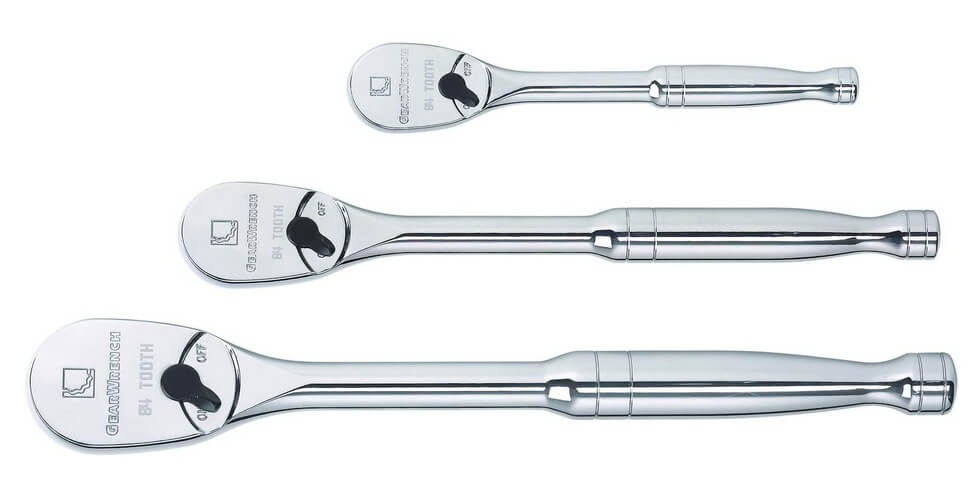
Longer ratchets come in 12”, 18” and 20” lengths. Longer handled ratchets give you more leverage, but also require more working space, so you will need an assortment of sizes.
Ratchet head style
Ratchets come in two basic styles; round head and tear-drop. Round-headed ratchets used to be the standard, but they’re going out of style because the tear-drop design offers more advantages.
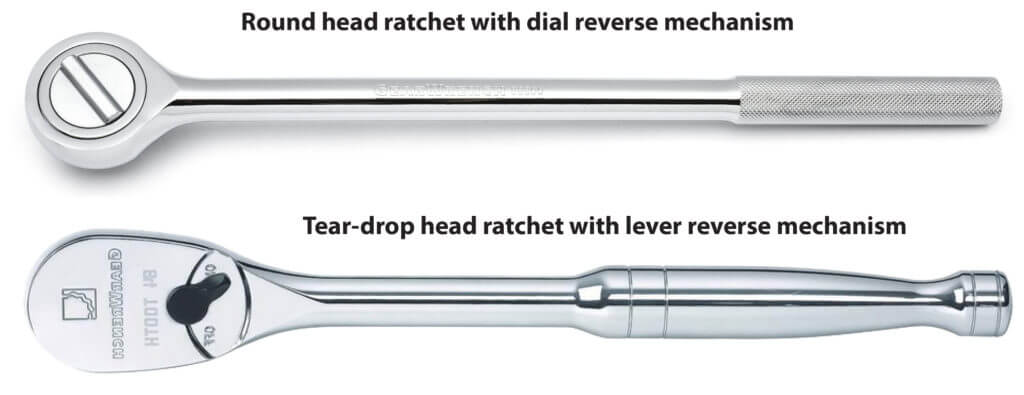
The reversing mechanisms on round head ratchets are awkward to work, especially in tight places because you often can’t reach the dial to change direction when the ratchet is in place. The tear-drop style, on the other hand, utilizes a lever that you can operate with your thumb.
Flex head and gimble head ratchet
In addition to round versus tear-drop, ratchet heads can have a flex joint or a gimble. Both styles allow you to get into tight places and move the handle away from the fastener.
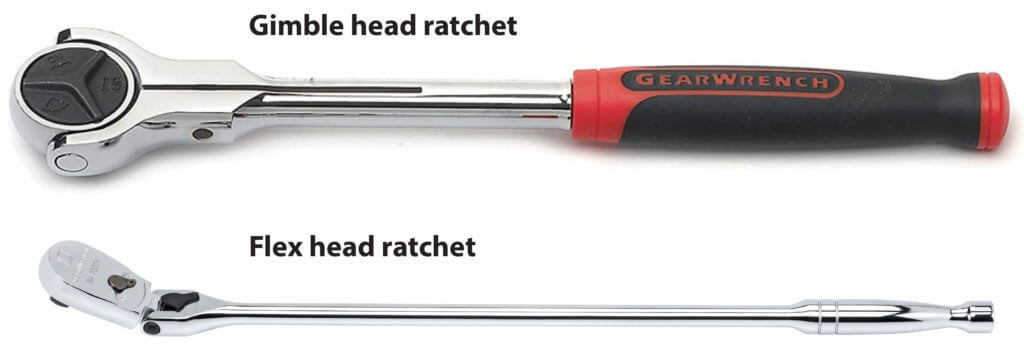
Ratchet head tooth count is critical
The gear inside the ratchet head has teeth around the circumference. 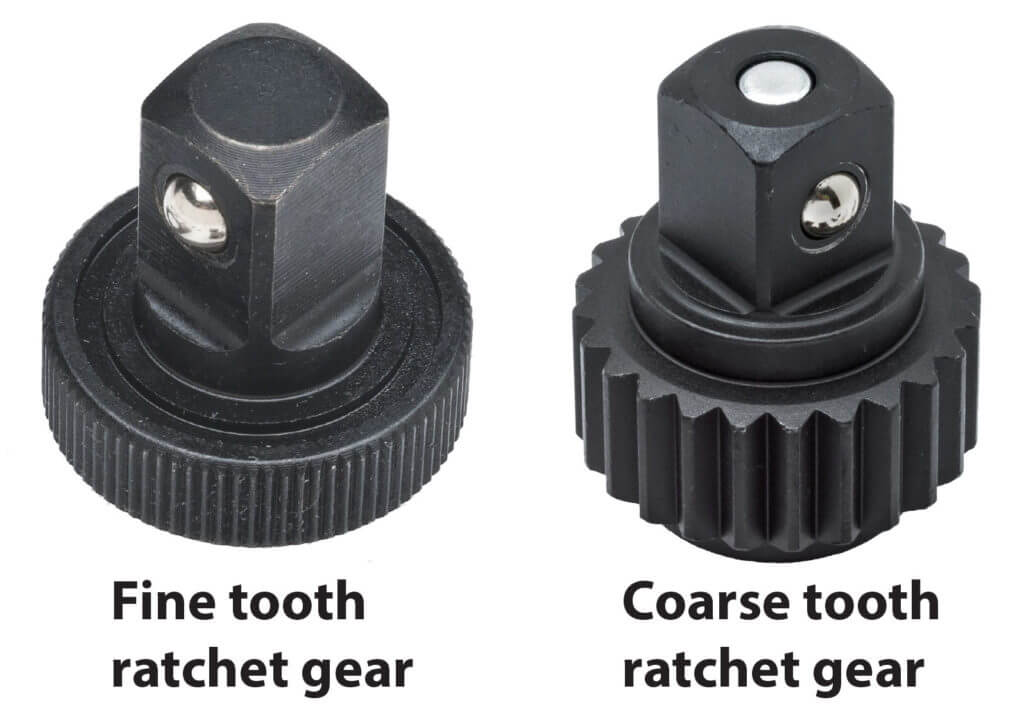 The number of teeth determines how far you have to move the ratchet handle to engage the next tooth. Coarse ratchets often have just 24 or 36 teeth, so you have to rotate the handle at least 10° to engage the next tooth. That can be a real challenge in an engine compartment or deep inside your clothes dryer. Fine tooth ratchets, on the other hand, have many more teeth, which means you don’t have to swing the handle as far. See the image below to see what a difference the number of ratchet teeth makes
The number of teeth determines how far you have to move the ratchet handle to engage the next tooth. Coarse ratchets often have just 24 or 36 teeth, so you have to rotate the handle at least 10° to engage the next tooth. That can be a real challenge in an engine compartment or deep inside your clothes dryer. Fine tooth ratchets, on the other hand, have many more teeth, which means you don’t have to swing the handle as far. See the image below to see what a difference the number of ratchet teeth makes
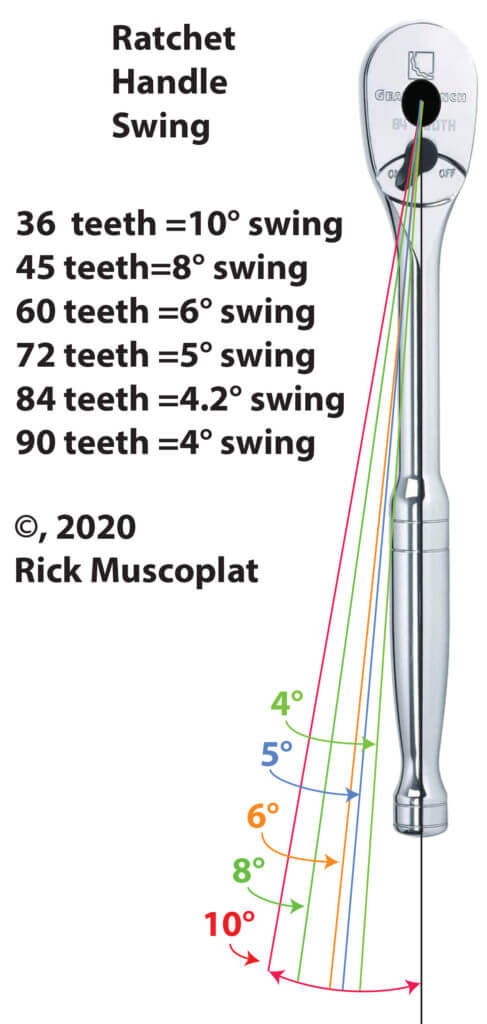
FINE TOOTH Ratchet MYTH Busting
Many DIYers and even some pros think that a fine-tooth ratchet can’t handle as much torque as the same size coarse ratchet. Not true. Even though the teeth on a fine-tooth ratchet gear are smaller than a coarse toothed gear, there are many more pawl engagement teeth to spread the torque to multiple teeth. A 3/8″ drive fine-tooth ratchet is tested to the same torque as a 3/8″ drive coarse drive ratchet. Myth busted!
Ratchet handle features
Choose from plain or polished finish, cushioned and bent. A plain finish ratchet is harder to clean, requiring a squirt of degreaser to remove dirt and grease, while a polished finish just wipes off. A cushioned grip is a bit easier on your hands, but also requires more cleaning. Lastly, a bent handle allows you to move the handle away from obstacles. That’s especially important when you’re working in tight spaces.
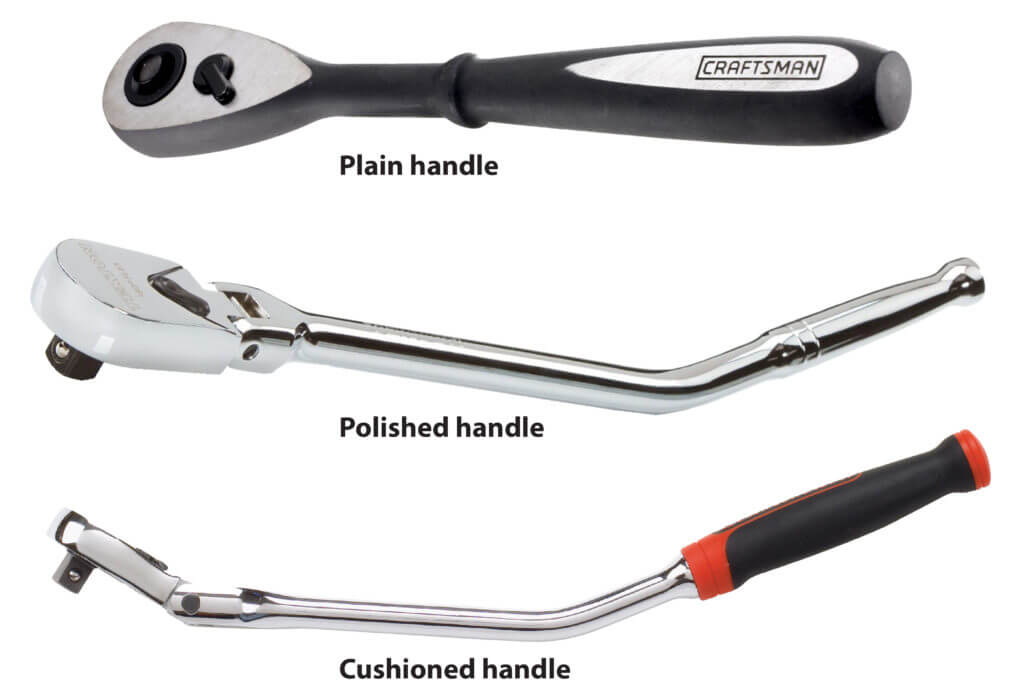
Ratchet Quick-release feature
Some ratchet heads include a push-button socket release feature. This works really well when you’re working in a greasy environment. Instead of trying to pry a greasy socket off the ratchet, simply push the button and the socket falls off.
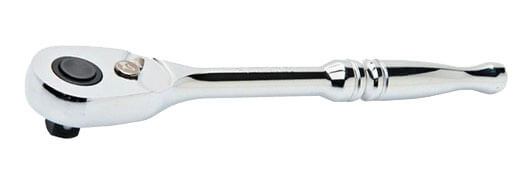
Quick release ratchet
Socket types
Chrome versus black impact sockets
Sockets come in chrome and impact types. Chrome sockets have thinner walls than impact sockets and can shatter if used with an impact wrench or impact driver. Chrome sockets can’t be used with power impact tools, only hand ratchets. If you plan to use a battery-powered or air-powered impact driver, buy impact-rated sockets.
6-point versus 12-point sockets
In addition to chrome and black impact, sockets have 6, 8, or 12 “points of contact” inside the socket. 8-point sockets are used to install and remove square nuts and bolts. Since most modern fasteners are hexagonal, you’ll rarely, if ever, need 8-point sockets unless you’re working on very old homes.
Socket manufacturers often include 12-point sockets in their sets, but trust me, you don’t want them. The advantage of a 12-point socket is that you only had to rotate the socket 30° to fit it onto a hex fastener, while you have to move a 6-point socket 60°. The downside to a 12-point socket is that they’re far more likely to strip the head of a worn or rusty hex bolt head or nut. Socket manufacturers deny this but survey any auto tech and you’ll find they all use 6-point sockets.
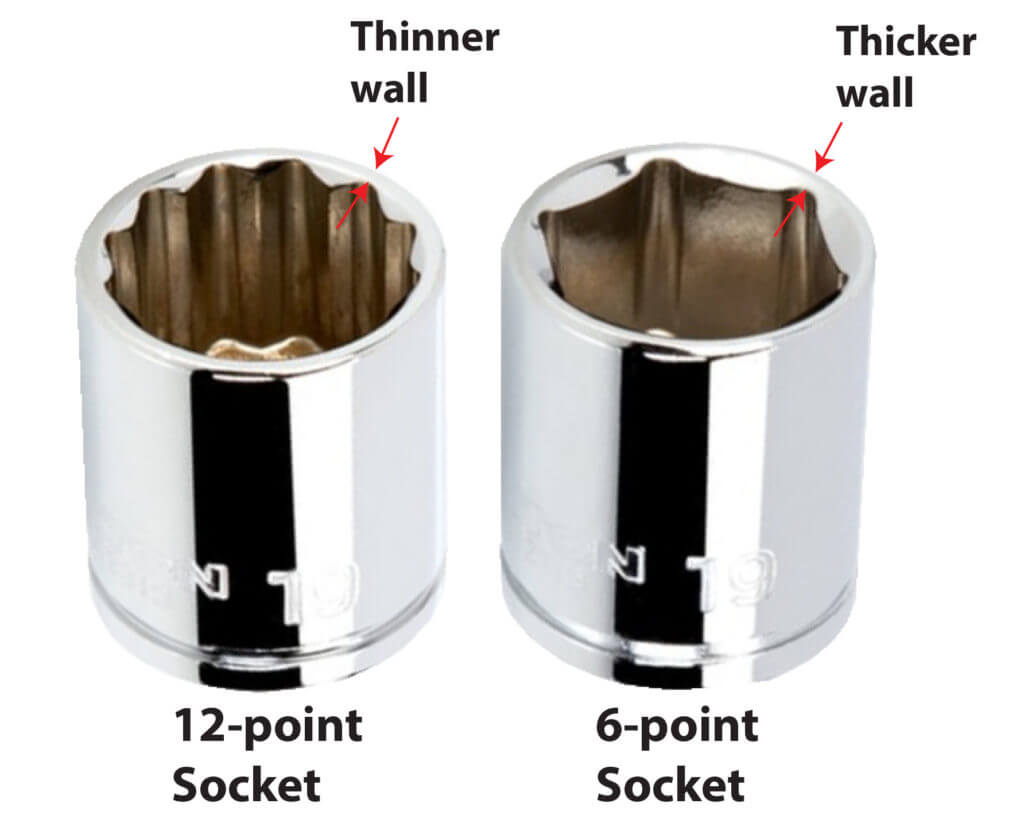
Deep versus shallow sockets
You’ll need the depth of a deep socket any time you’re 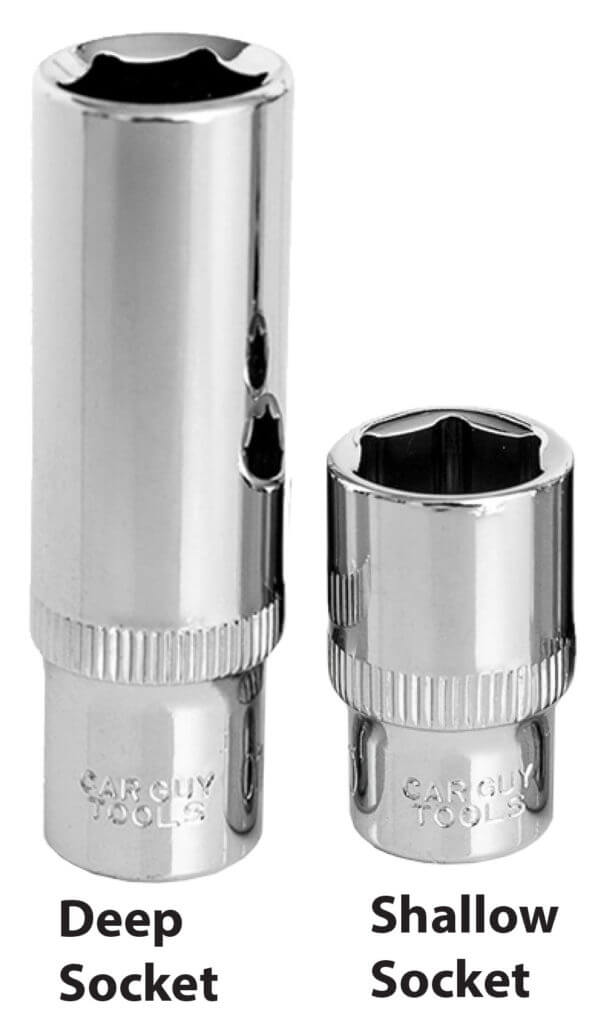 trying to remove a nut from a stud or a bolt with many exposed threads. But you can also use a deep socket in applications where the extension bar in your socket set is too long. Aside from those two uses, you’ll mostly use shallow sockets.
trying to remove a nut from a stud or a bolt with many exposed threads. But you can also use a deep socket in applications where the extension bar in your socket set is too long. Aside from those two uses, you’ll mostly use shallow sockets.
How many pieces in the socket set?
Sellers often confuse buyers by adding accessories pieces that you’ll rarely use to boost the perceived size of the socket set. They do that to create the illusion that the increased piece count is a better set. For example, they’ll add flat, Torx, hex, and Philips screwdriver bits. They’re nice to have, but chances are you already have them. Plus, when it comes to socket sets, having the widest range of socket sizes is what’s most important, NOT whether the set includes accessory bits. What good is an extra Philips bit if the set doesn’t have the right size socket for the job?
In other words, when it comes to socket set piece count, the number of sockets is really the only number that counts. NOT the accessories.
What are the best socket set brands?
Most consumer-grade socket sets are made in Taiwan or China. But there are cheap sets and high-quality sets. What’s the difference? The quality of the finish, the size markings on the sockets, the degree of precision in the ratchet, and the warranty and how you obtain warranty service. Some brands offer an over-the-counter exchange for a broken socket, while others make you mail the defective socket back to the manufacturer.
Here are the socket set brands I like:
Gearwrench
Kobalt
DeWalt
Stanley
Husky (made by Stanley)
What about Harbor Freight Socket Sets?
I own Snap-On, Craftsman, S&K, Matco and Harbor Freight sockets. The Harbor Freight sockets work just fine, even though they’re the cheapest. But I hate their ratchets. I find their ratchet mechanisms to be rough and hard to reverse. They bind up. I hate them. If you buy Harbor Freight, buy just their sockets and buy ratchets from the companies listed above.
Socket set Warranty
Many socket set manufacturers offer a lifetime warranty, but it usually only applies to the sockets, not the ratchet. To obtain warranty service on a socket, you’ll most likely have to mail it in, which will probably cost more than buying a new socket.
Replacement ratchet parts
Ratchets wear out with daily use and then can get damaged from rust. Many manufacturers offer ratchet rebuilt kits that can put your ratchet back into new condition.
The socket set case is an important consideration when you buy a socket set
This is a tough one because it’s hard to determine the quality of the case when you’re ordering online. Poorly designed cases make you fight to insert and remove the sockets, or they’re so loose, the sockets fall out as soon as you open the case. If at all possible, try removing and inserting the parts before you buy. If you’re buying online, read the reviews.
©, 2019 Rick Muscoplat
Posted on by Rick Muscoplat
